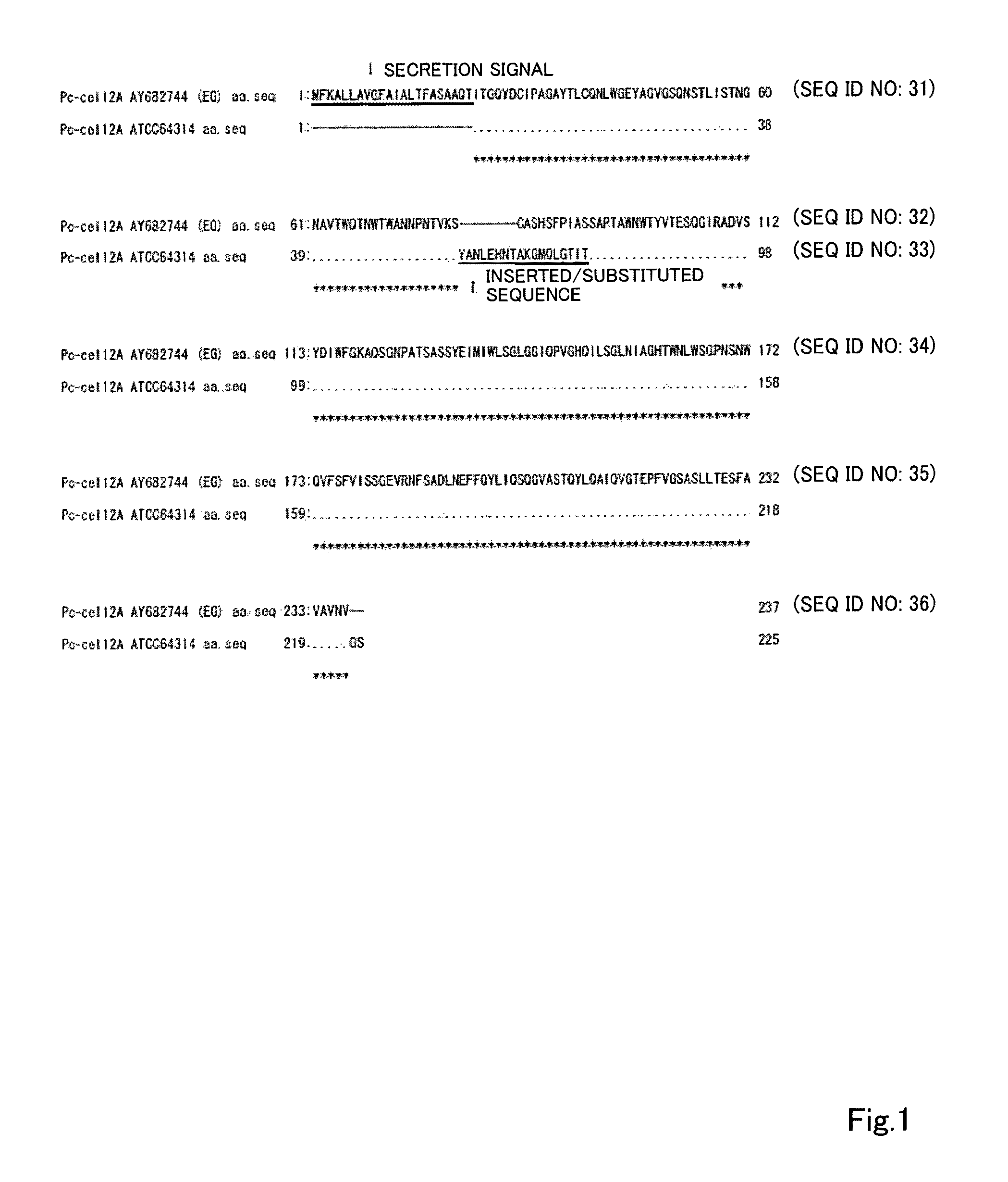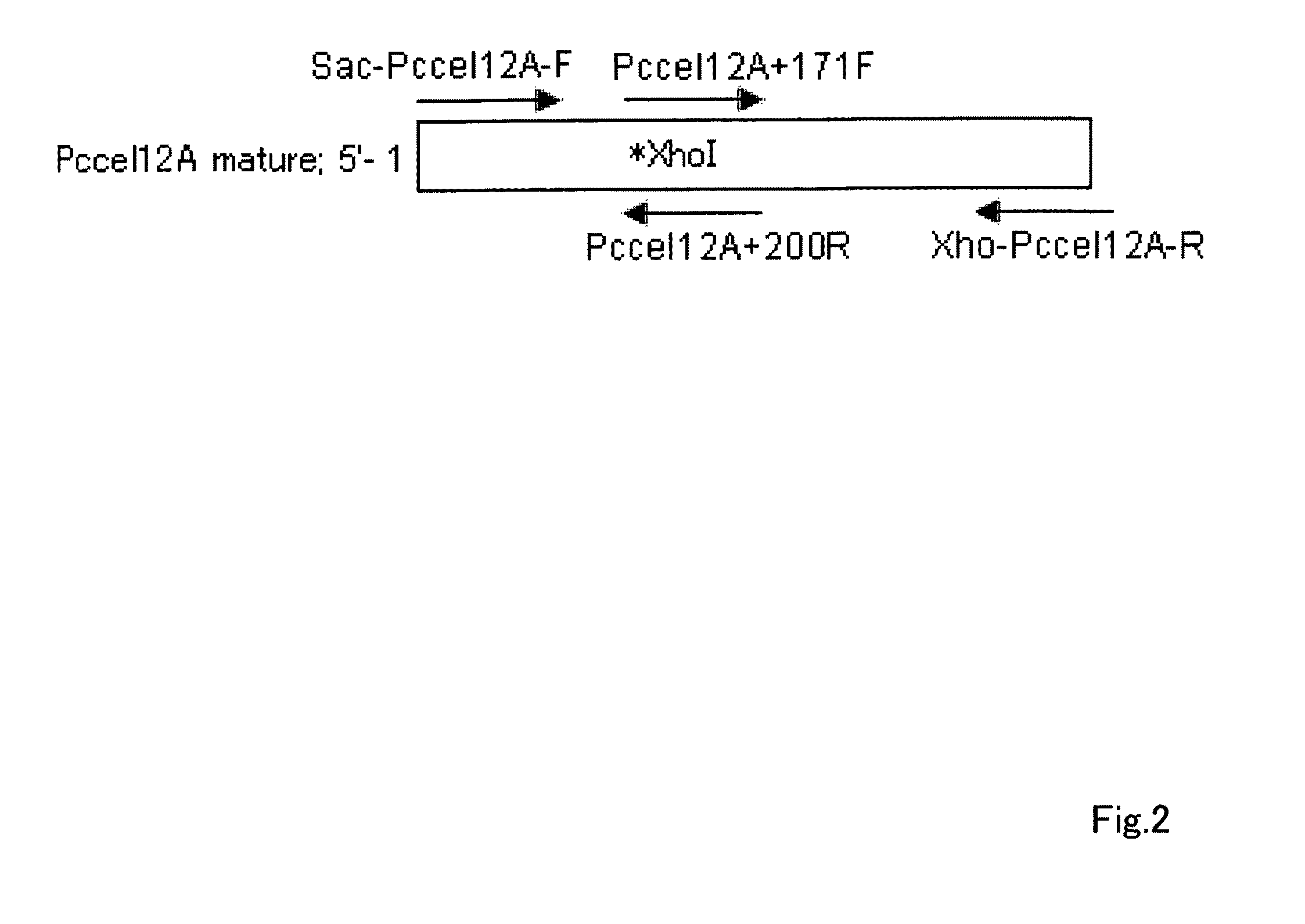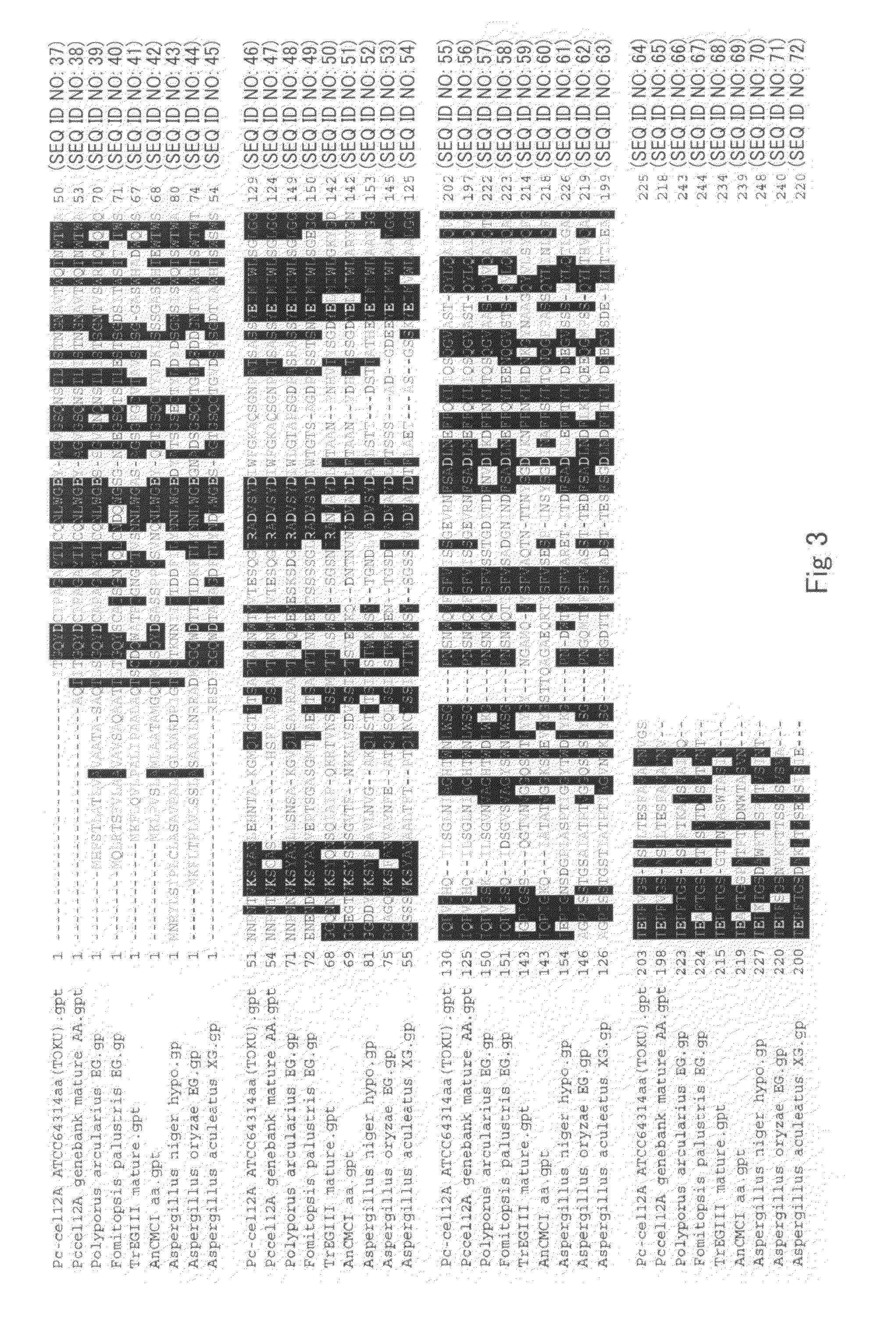Acid-resistance endoglucanase and the use of thereof
a technology of acid-resistant endoglucanase and endoglucanase, which is applied in the field of acid-resistant endoglucanase, can solve the problems of insufficient acid-resistant cellulases which function effectively under, insufficient acid-resistant cellulases currently available, and achieves the effect of effective prevention of contamination, high cellulose decomposition activity, and substantial inability to use cellulos
- Summary
- Abstract
- Description
- Claims
- Application Information
AI Technical Summary
Benefits of technology
Problems solved by technology
Method used
Image
Examples
example 1
Cloning of Endoglucanase Gene from Phanerochaete chrysosporium:
[0137]Because the P. chrysosporium gene has a high GC content, amplifying the PCR product was expected to be difficult. It was thus decided to use TaKaRa LA Taq with GC Buffer (Takara Shuzo), which has been optimized for GC-rich templates. The resulting PCR amplification product was cloned in the PCR2.1-TOPO vector using the TOPO TA Cloning Kit (Invitrogen).
example 2
Gene Recombination
[0138]Plasmid DNA was introduced into Escherichia coli using the Z-Component E. coli Transformation Kit (Zymo Research) or ECOS Competent E. coli DH5α (Nippon Gene). QIAprep Spin Miniprep Kit (50) (Qiagen) was used for plasmid extraction from E. coli. Purification of the gene fragments was carried out by electrophoresis in a 1% agarose gel, followed by recovery and purification from the gel using the Zymoclean Gel DNA Recovery Kit (Zymo Research). The LigaFast Rapid DNA Ligation System (Promega) was used for the ligation reaction. Restriction enzymes produced by Takara Shuzo were used.
example 3
Construction of P. chrysosporium cDNA Library
[0139]P. chrysosporium (ATCC64314) cells were inoculated into 50 mL of modified Vogel's medium 9 (0.01 M dimethyl succinate buffer (pH 4.5), 0.23 g / L NH4H2PO4, 0.068 g / L veratryl alcohol, 0.2% (w / v) Avicel (microcrystalline cellulose: Avicel PH-101, Asahi Kasei)) within a 500 mL Erlenmeyer flask, and static cultured at 30° C. for four days. The cells that had grown were collected by centrifugal separation, and rapidly cooled with liquid nitrogen. The frozen cells (wet weight, 120 mg) were placed in a mortar and mechanically disrupted for about 10 minutes with a pestle while maintaining the frozen state by pouring in liquid nitrogen. The total RNA was extracted from the disrupted cells using a RNeasy Plant Mini Kit (Qiagen). When DNase treatment was not carried out at the time of RNA extraction, genomic DNA admixture occurred, resulting in the amplification of intron-containing genomic DNA in the next PCR reaction. This problem was resolve...
PUM
| Property | Measurement | Unit |
|---|---|---|
| pH | aaaaa | aaaaa |
| pH | aaaaa | aaaaa |
| pH | aaaaa | aaaaa |
Abstract
Description
Claims
Application Information
 Login to View More
Login to View More - R&D
- Intellectual Property
- Life Sciences
- Materials
- Tech Scout
- Unparalleled Data Quality
- Higher Quality Content
- 60% Fewer Hallucinations
Browse by: Latest US Patents, China's latest patents, Technical Efficacy Thesaurus, Application Domain, Technology Topic, Popular Technical Reports.
© 2025 PatSnap. All rights reserved.Legal|Privacy policy|Modern Slavery Act Transparency Statement|Sitemap|About US| Contact US: help@patsnap.com



